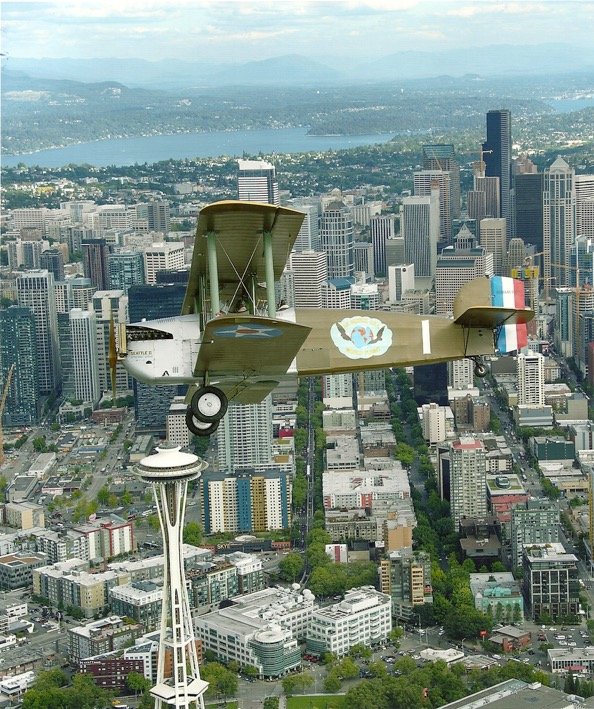in the Boeing Centennial festivities.
In 1924, eight pilots in four planes set out to circumnavigate the globe. Today, a group of volunteers led by Diane and Bob Dempster are reproducing the original aircraft with the goal of retracing that iconic journey.
“It’s the second aviation milestone, after the Wright brothers and before Lindberg,” says Diane Dempster, Center of Excellence Board Chair, describing the U.S. Army Air Services’ first successful flight around the globe. Four float-equipped, open cockpit biplanes took off from Sand Point in Seattle, with two planes completing the around-the-world journey.
The Dempsters first became fascinated with the planes when they saw them at a museum in Ohio and the Smithsonian. Diane remembers thinking, “Wow, what an amazing feat.” Bob had another idea. “He turned to me and said, ‘I’m going to build one of these and fly it around the world.’”
The project began in 2001. “First, we needed to understand the tech,” says Diane. After conducting research, the couple, along with volunteers and friends, welded a fuselage and built wings to the specifications of the original planes. Just as in 1924, The Boeing Company played a role, with assembly taking place at the old Boeing Plant Two.
Nearly all of the plane is new, with the exception of a 1918 400-horsepower Liberty engine. For the propeller, the Museum of Flight loaned the team an original propeller to scan, CNC and cut and laminate the wood. Modern technology like lasers and waterjets are helping to build a classic plane. Diane, a former Boeing Precision Machinery Electronics Maintenance Technician, says, “We had to have uniformity on our assemblies.” What’s been most interesting, says Diane, is “learning the technology and materials of the twenties and then finding the craftspeople, woodworkers and metalworkers” to take on this unique job.
The plane is appropriately named the Seattle II as the predecessor to the original four planes named Boston, New Orleans, Chicago and Seattle. It was also blessed by Ken Workman, 5th generation great-grandson of Chief Si’ahl. As part of his blessing, Workman named the plane “Thunder Canoe” in Lushootseed, the native language of the local Duwamish tribe.
After more testing, including the pontoons, the team flew the plane from Renton to Chehalis, where the Dempsters now live. They intend to continue working on the project there. “There were a lot of challenges then. There are different challenges now. The weather is the same!” From COVID to war to diplomatic complexities, safety comes first when considering what’s next forthe project.
“It’s a story of technology and human spirit. Nobody thought anyone could fly around the world.” The team of volunteers led by Diane and Bob aim to repeat that feat.
To find out more:
